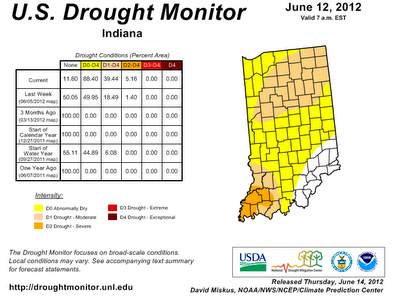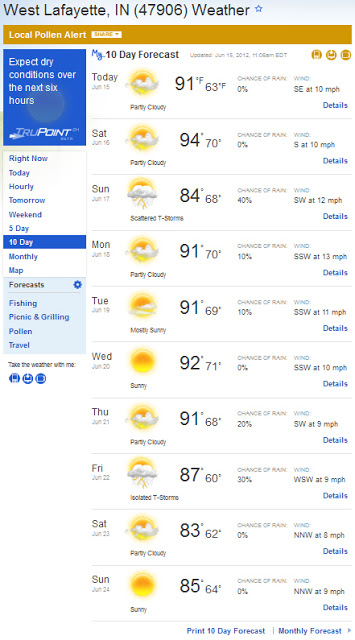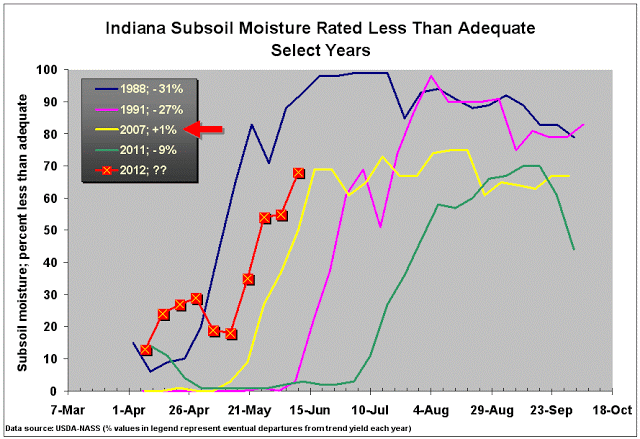If you like your toast burnt and your bacon crisp, then you might be enjoying this weather. Most of Indiana has entered into drought officially as determined by the drought monitor (see map below). Maps are updated weekly and available at: http://droughtmonitor.unl.edu/monitor.html
Indiana specific weather can also be found at http://iclimate.org/index.asp including maps like the one below showing our precipitation deviation from normal over the past 90 days.
The extended forecast doesn’t look great for rainfall in the near future.Only one of the next 10 days has a chance of rain greater than 30% – and it’s only 40%. Additionally, the temperatures are forecasted to be warm and breezy over the next ten days.
Additionally, subsoil moisture levels are approaching that of the 1988 drought due to our dry winter and spring. Image courtesy kingcorn.org/cafe.
How should you adjust your management?
- Irrigation: See our recent update on this issue by clicking here.
- Water availability: Many irrigation ponds at golf course are much lower than normal due to insufficient precipitation in winter and spring and golf course superintendents are beginning to conserve water and prioritize which areas that need water most either due to the their soil type, management, or their economic importance (i.e. golf course putting greens). I have heard of no water restrictions, but they might come at some point. Click here to read a previous post on this topic.
- Fertilization: Fertilization in June is not typical except for irrigated turf. If irrigation is available, then fertilization can proceed as normal based on your typical program. However, if you are managing un-irrigated areas then it would be best not to fertilize during this dry period since drought stressed plants will not take up nitrogen. Additionally, some injury could occur to drought stressed areas from trafficking equipment across the site while fertilizing. We recommend waiting to fertilize unirrigated areas until after the turf greens-up after the next rainfall or in September at the start of our fall fertilization season.
- Weed Control: See our recent update on this issue by clicking here.
| Even the turf at Purdue’s president’s house is stressed. |


